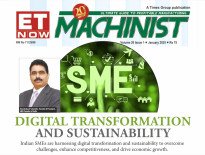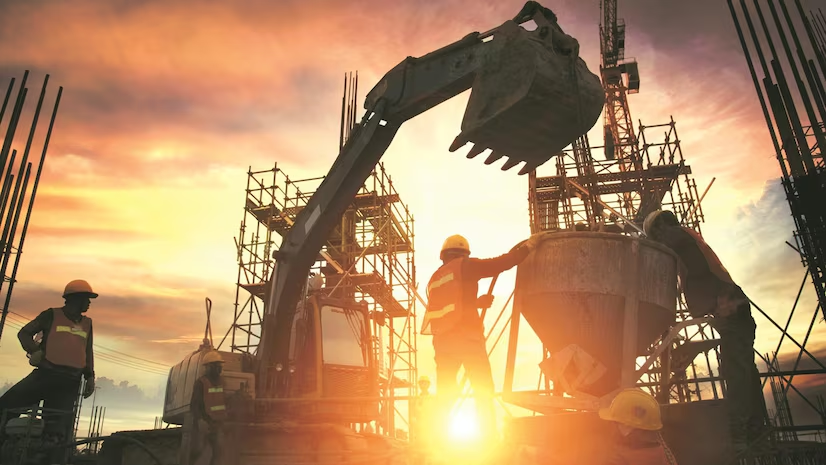Hey, like this? Why not share it with a buddy?

The Bombay Stock Exchange (BSE) SME platform has been a game-changer for small and medium enterprises (SMEs) in India, offering them a pathway to raise capital through initial public offerings (IPOs). This access to funding has allowed many SMEs to scale their operations and pursue growth ambitions that might have otherwise been out of reach. Once SMEs fulfil certain conditions-like achieving a minimum public float and proving profitability-they can migrate from the SME platform to the main board of the BSE. This shift is a pivotal moment for any SME, opening doors to a broader investor base and often boosting company valuations. In this piece, we’ll highlight five standout SME stocks that have successfully graduated to the main board. These firms have not only met regulatory standards but also exhibited strong growth and profitability, making them top contenders on the BSE. By diving into the factors that propelled their growth and the hurdles they cleared along the way, we can uncover actionable strategies that other SMEs could leverage to follow a similar path to success.
#1 Waaree Renewable Technologies
Waaree Renewable Technologies stands as a key player in the solar EPC space, while also serving as a solar developer involved in financing, constructing, owning, and operating solar projects. The company operates across the entire solar value chain, from manufacturing cells and modules to executing both rooftop and utility-scale solar projects. With a proven track record, Waaree has supplied over 6 GW of solar modules and commissioned more than 1.1 GW of solar EPC projects. As of June 2024, its unexecuted order book stands at 2,191 MW peak, a significant increase from 856 MW peak in FY23, and the company successfully delivered 704 MW peak of projects in FY24. In December 2023, Waaree signed a pivotal agreement to commercialise solar products, enhancing local production, scalability, and competitive deployment in India, catering to both domestic and international developers and EPC companies. Between 2021-2024, Waaree Renewable Technologies’ sales have multiplied 57 times. The company has turned the business around, reporting a profit after 3 years of continuous losses.
Waaree Renewable Technologies Financial Snapshot (2021-24)
| 2020-2021 | 2021-2022 | 2022-2023 | 2023-2024 | |
| Revenue Growth (%) | 109.20% | 1001.34% | 107.57% | 149.62% |
| Operating Profit Margin (%) | 72.65% | 19.71% | 24.30% | 24.03% |
| Net Profit Margin (%) | -18.24% | 5.51% | 15.77% | 16.89% |
| Return on Capital Employed (%) | 7.55% | 26.67% | 84.06% | 103.22% |
| Return on Equity (%) | -9.81% | 34.08% | 96.90% | 94.02% |
Source: Equitymaster
This surge in profits has helped the company trim down its total debt, strengthening the balance sheet. The debt-to-equity ratio has come off substantially, from 5.3x in FY21 to 0.5 in FY24, helping the company expand on a strong footing. As India progresses toward its renewable energy targets, backed by supportive government policies and increased funding, the company expects sustained growth in its solar EPC and project execution capabilities.
#2 Gensol Engineering
Gensol Engineering, primarily known as a solar EPC company, has built an impressive engineering portfolio of 33,956 MW, firmly establishing itself as a key player in the solar industry. The company’s leadership in the sector is backed by its strong expertise in design engineering and a solid track record of successful project execution. In a bid to diversify its revenue streams, Gensol has ventured beyond solar energy. It has set up an EV manufacturing facility in Pune, focused on the production of electric three-wheelers and four-wheelers. The EV manufacturing business is progressing, with its compact two-door electric vehicle slated for production at its Pune facility, which boasts an annual capacity of 30,000 units. Moreover, the company is making inroads into the green hydrogen space, securing its first-ever green hydrogen project. Further cementing its position, Gensol’s order book, including solar and battery energy storage system (BESS) projects, stands at Rs 47 bn as of 31 July 2024, with a bid pipeline expected to exceed this figure. The company has also secured a 570 MW BESS project from Gujarat Urja Vikas Nigam Limited (GUVNL), expected to generate a revenue of Rs 31 bn. over 12 years tenure. This diversification into multiple revenue streams reduces the company’s reliance on any single sector. However, there’s a risk of spreading resources too thinly, potentially leading to inefficiencies or a dilution of expertise. Still, it’s too early to assess whether these risks will materialize.
Gensol Engineering Financial Snapshot (2021-24)
| 2020-2021 | 2021-2022 | 2022-2023 | 2023-2024 | |
| Revenue Growth (%) | -22.63% | 151.39% | 148.23% | 147.06% |
| Operating Profit Margin (%) | 10.94% | 13.21% | 20.85% | 27.27% |
| Net Profit Margin (%) | 4.99% | 6.93% | 5.86% | 5.55% |
| Return on Capital Employed (%) | 12.19% | 22.64% | 13.41% | 15.35% |
| Return on Equity (%) | 9.20% | 26.90% | 18.42% | 20.07% |
Source: Equitymaster
Between 2021-2024, the company has increased its revenue and net profit by 1.49 times and 1.56 times, respectively. The 5-year average RoE and RoCE stand at 17.5% and 21.8%, respectively. Looking ahead, Gensol plans to invest an additional Rs 9 bn acquiring vehicles for its EV leasing business in FY25. While its debt-to-equity ratio is relatively high at 2.5, the company has announced plans to raise Rs 3 bn through a qualified institutional placement to improve its balance sheet. While Gensol’s diversification strategy is ambitious, the company’s ability to manage growth across multiple sectors will be key to its long-term success.
#3 Lancer Container Lines
Lancer Container Lines is a rapidly growing player in the shipping and logistics sector. The company offers highly integrated services across key global regions such as the Indian subcontinent, Southeast Asia, the Mediterranean, the Middle East and North and Latin America. It has positioned itself as a strong contender in the global logistics market, with an expansive network and key global registrations like AMTOI, FIEO and BIC France. Despite facing macroeconomic headwinds and geopolitical challenges, particularly the Red Sea crisis, Lancer Container Lines delivered strong financial results in FY24, driven by enhanced operational efficiencies and expansion of the company’s container fleet. Between 2021-2024, the sales and net profits have registered a CAGR of 27.2% and 59.9%, respectively. The returns have also been good with the RoCE and RoE averaging at a solid 32.7% and 37% over 3 years period.
Lancer Container Lines Financial Snapshot (2021-24)
| 2020-2021 | 2021-2022 | 2022-2023 | 2023-2024 | |
| Revenue Growth (%) | 18.03% | 104.85% | 31.44% | -23.50% |
| Operating Profit Margin (%) | 8.32% | 8.11% | 11.73% | 16.06% |
| Net Profit Margin (%) | 3.11% | 4.51% | 6.42% | 9.21% |
| Return on Capital Employed (%) | 25.00% | 51.57% | 29.64% | 16.88% |
| Return on Equity (%) | 24.45% | 49.15% | 41.91% | 20.01% |
Source: Equitymaster
Looking ahead, Lancer is focused on aggressively expanding both its capacity and reach. The company aims to boost its TEU capacity to 45,000 units by FY26, adding 200-300 containers per month. It is also actively seeking to purchase a new vessel to strengthen its position as a fully integrated logistics provider. Lancer is exploring high-potential markets in regions like the Mediterranean, North and East Africa, and CIS countries. Aligned with India’s Sagarmala Program, which focuses on modernising ports and enhancing trade efficiency, Lancer is poised to benefit from a projected 10-15% increase in exports by FY25. Its strategic base in Dubai also offers key advantages by providing access to major global shipping routes and reducing transit times. The recent acquisition of a 60% stake in Transco Logistix Worldwide Private Limited further boosts Lancer’s freight forwarding capabilities.
#4 Advait Infratech
Advait Infratech’s operations span various verticals, including turnkey telecommunication projects, the installation of power transmission and substation equipment, liasoning, and marketing. The company also manufactures a diverse range of products, including optical fibre ground wire (OPGW), OFC cables, aluminium-clad steel wire, emergency restoration systems, and OPGW joint boxes. In 2023, Advait took a major leap into the sustainable energy sector by venturing into the manufacturing of electrolysers and fuel cell assemblies-key components in green hydrogen production. Recently, the company signed a Memorandums of Understanding (MoU) with the Government of Gujarat. These MoUs entail a proposed investment of Rs 450 m. Apart from this, the company with KPI Green Energy inked a Memorandum of Understanding (MoU) with the government of Uttarakhand. This agreement will pave the way for the establishment of a 500 MW solar park under the captive power producer (CPP) segment.
Advait Infratech Financial Snapshot (2021-24)
| 2020-2021 | 2021-2022 | 2022-2023 | 2023-2024 | |
| Revenue Growth (%) | 47.60% | 19.70% | 30.51% | 103.60% |
| Operating Profit Margin (%) | 10.23% | 15.00% | 17.89% | 17.00% |
| Net Profit Margin (%) | 7.27% | 6.76% | 7.91% | 0.11% |
| Return on Capital Employed (%) | 15.26% | 23.36% | 27.08% | 37.90% |
| Return on Equity (%) | 18.46% | 15.31% | 19.86% | 37.60% |
Source: Equitymaster
Between 2021-2024, the sales and net profits have registered a CAGR of 47% and 66%, respectively. The 3-year average RoCE and RoE stood at 29.5% and 24.3%, respectively. Going forward, the company plans to bolster its position in the green hydrogen space by expanding its renewable energy capacity.
#5 Yasho Industries
Yasho Industries is in the specialty chemicals space. The company focusses on additives, lubricants, rubber and polymers. It manufactures a wide range of chemicals, including aroma chemicals, food antioxidants, rubber chemicals, lubricant additives, and specialty chemicals, with a robust portfolio of around 148 products. Yasho is also banking on its global presence, with exports contributing a significant 61% of revenue. Despite shipping challenges, export volumes have continued to grow, signaling robust demand across markets. A key part of its international strategy is Yasho Industries Europe, a wholly owned subsidiary based in Europe, which operates as a stock point, engaging in the trading of products manufactured by Yasho. This subsidiary strengthens the company’s global supply chain and improves service to its international clientele. The recent expansion move marks a significant milestone. Adding an initial capacity of 20,000 metric tons per annum, this facility increases Yasho’s total capacity to 32,500 metric tons. However, as with many growth initiatives, early-stage hiccups like underutilization are expected, with current capacity utilisation at just 10%. The company projects this to improve to 90% by FY26.
Yasho Industries Financial Snapshot (2021-24)
| 2020-2021 | 2021-2022 | 2022-2023 | 2023-2024 | |
| Revenue Growth (%) | NA | 68.59% | 9.57% | -11.96% |
| Operating Profit Margin (%) | 16.44% | 16.86% | 18.77% | 18.06% |
| Net Profit Margin (%) | 5.98% | 8.53% | 10.11% | 9.76% |
| Return on Capital Employed (%) | 19.67% | 28.75% | 23.47% | 13.01% |
| Return on Equity (%) | 27.21% | 41.50% | 33.03% | 21.75% |
Source: Equitymaster
Financially, Yasho reported solid growth between 2021-2024. The company reported a 5-year CAGR of 17.5% in sales and an impressive 30.9% in net profit. Its returns remain strong, with average RoCE and RoE at 21.4% and 32%, respectively. Debt levels, which have peaked due to the expansion, are expected to normalize, with a debt-to-EBITDA ratio projected to drop to three by the end of FY25. Yasho is also extending its footprint in the US with a new subsidiary, a strategic move aimed at growing its sales network in a key market.
Conclusion
The journey of these five successful SME companies to the mainboard demonstrates the potential for growth and expansion in the small-cap segment. While their transition signifies a significant achievement, it is essential for investors to monitor these companies closely. Continued scrutiny of their financial health, market positioning, and growth strategies will be crucial, as the challenges that come with larger operations can impact their performance. By staying informed and vigilant, investors can better navigate the evolving landscape of these transitioned companies and capitalize on their future potential.










